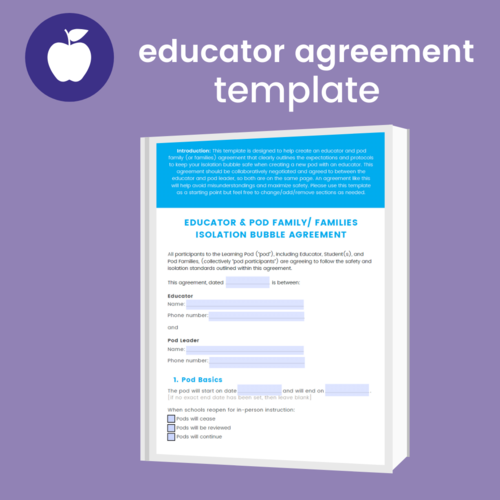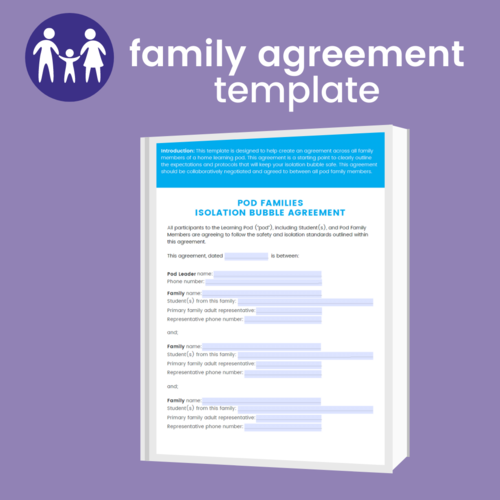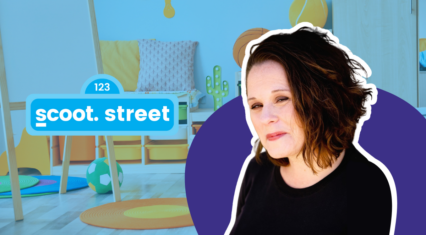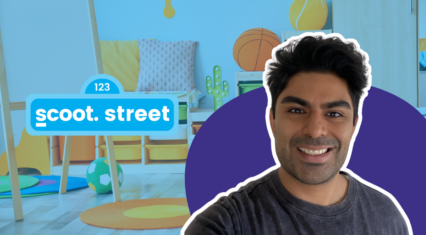Search
Get started
Log into your referral dashboard
One of the most difficult components to creating a home learning pod, or a pandemic pod, is the safety agreement between families and educators. While it feels overwhelming to consider all of the possibilities and variables an isolation bubble agreement will give your pod clear guidelines on your safety threshold and help avoid misunderstandings.
When creating a safety agreement, it’s important to collaboratively negotiate and agree to the terms as a pod unit so try your best to discuss these topics before drafting anything!
We’ve put together 10 steps for you to consider when creating your COVID Isolation Bubble Agreement for a home learning pod, and included free templates to use!
1) List your pod families
Start by listing the name of each family. Include the student(s) name(s), primary contact person, and phone number.
2) Select your start dates and duration
When will your pod start? Is the end date set? Or will you wait and see how the semester goes? Be sure to discuss what your plans will be if/when in-person instruction resumes.
3) Designate a location and schedule
Whose house is your pod taking place? Will it be held at the same location each day? Will the schedule be varied? How often will your pod teacher come?
Many families choose to host in one location, but others decide to split it up. Whatever works best for your pod, do that!
4) Specify your curriculum expectations and activities
What kind of expectations do you have around the curriculum? Will the teacher work on the school’s curriculum only? Will it be both school curriculum and supplement learning? Or will you be leaving your current school and expecting to co-create an alternative curriculum with a pod teacher?
Consider the types of activities your pod will do. Do you want traditional classroom structures? Or are you open to more innovative and progressive activities? Do you want the teacher to perform testing and assessments? Do you need a teacher who can teach a particular religion? Are you okay with outdoor activities? What kind of breaks will you have?
5) Determine safety thresholds – inside pod
Next you’ll want to determine your pods safety thresholds. What level of COVID precautions during class time do you need from each other and the teacher to feel comfortable? What expectations do you have around masks? How often should hand sanitizer be administered? Will the class be held indoors or outdoors? What are the sanitizing procedures for entry and exit? How will the homes be cleared of any potentially dangerous materials (ie: chemicals, weapons, etc)
6) Determine safety thresholds – outside pod
You’ll want to determine your safety expectations for everyone when they aren’t inside the home classroom. Are participants allowed to socialize outside of the pod households? What kinds of errands are acceptable? Do participants have to notify if they travel outside of the state? Will these expectations be re-visited as COVID cases decrease?
7) Pre-pod expectations
Decide what you expect before your pod begins. Will everyone be tested? Will everyone isolate for a certain amount of time? Will an antibody test suffice?
8) Plan If Someone Tests Positive
The most important discussion item is what you’ll do if someone becomes ill, shows symptoms of COVID-19, or breaks isolation rules. What protocol will you follow if someone is positive? How will you notify the pod? Will the pod be cancelled? For how many days? How long before a person can return? If the educator gets sick, what will you do?
9) Agree on Finances
Part of your agreement should include how you’ll deal with finances. How will expenses be split? How will supplies be paid for? Will the host receive a discount? How will you pay the educator? How will payments work if someone gets sick or has to miss a pod day?
10) Create definitions for your safety expectations
Lastly, you’ll want to provide concrete definitions of your safety measures. Hand sanitizing might mean a squeeze of Purell to you but it might mean 1 minute of liquid soap washing in the sink to another. Seems silly, but agreeing on household safety, hand hygiene and respiratory etiquette, cleaning and disinfection, shared objects, classroom layout, and meal etiquette before hand will save you from future discrepancies!
Take the time to define what your expectations are for each of these and start off your pod on the right path.





![How to write a strong substitute note [+free template!]](https://scoot.education/wp-content/uploads/2022/05/thank-you-426x235.png)


